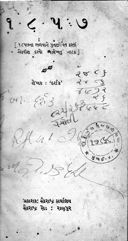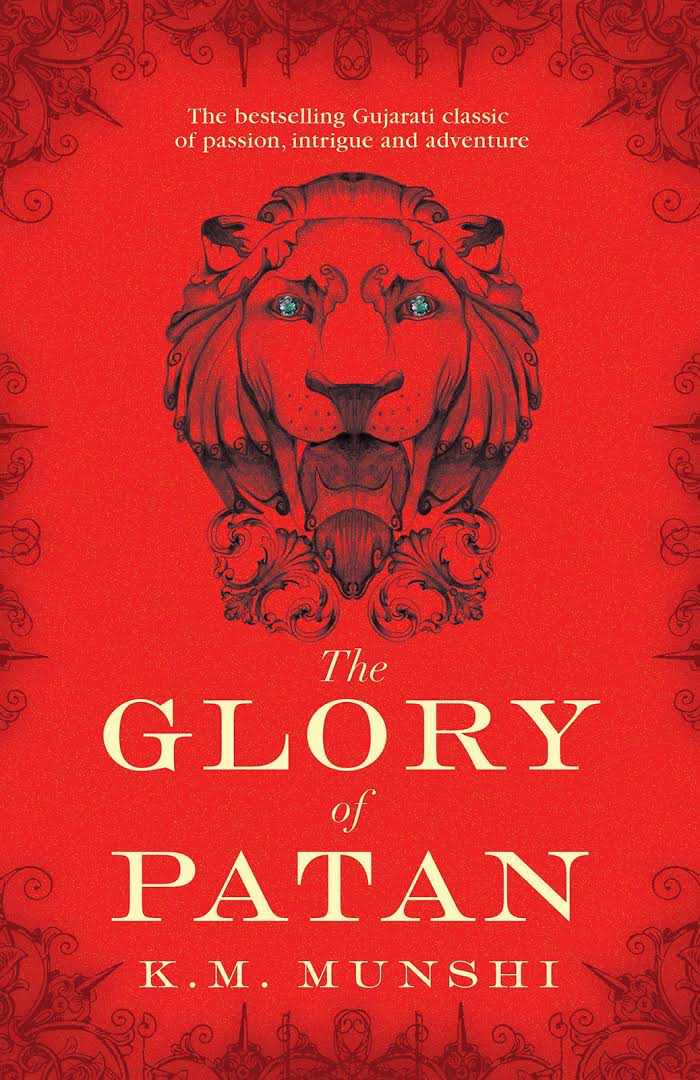 The Glory of Patan by K.M. Munshi, translated into English by Rita and Abhijit Kothari. Penguin Random House India Pvt. Ltd., 2017. xxxi, 343 p. hard cover, Rs. 499
The Glory of Patan by K.M. Munshi, translated into English by Rita and Abhijit Kothari. Penguin Random House India Pvt. Ltd., 2017. xxxi, 343 p. hard cover, Rs. 499
Munshiji’s was a multi-dimensional and multifaceted personality. He was a giant of his time, both in life as well as in letters. He was a leading lawyer of his time. He actively participated in the freedom struggle between 1915 and 1947. He held important portfolios in the Bombay Government before independence, and in the central cabinet after independence. He, very ably led the police action against the Hyderabad State and brought it under the Indian Union. His contribution to the framing of the Indian Constitution was substantial. But above all, he was a writer par excellence. As a writer, he was a bilingual. He wrote a large number of books in Gujarati (56) as well as in English (36). He wrote his longest and most ambitious novel ‘Krishnavatar’ not in Gujarati, but in English. It was then translated in to Gujarati. Munshiji has written about culture, history, politics, education, religion, society, etc., but average Gujarati reader knows him chiefly as a master novelist. He has given us some interesting social novels as well, but his forte is Historical novel. Some of his Gujarati novels have been translated earlier into English (e.g. ‘Gujaratno Nath’) with varying degree of success. Now, his first historical novel, ‘Patanni Prabhuta’ is very ably rendered into English under the title ‘The Glory of Patan’ by Rita and Abhijit Kothari.
The original Gujarati novel was first published in 1916 by the Gujarati Printing Press, Mumbai, but not for sale. Copies were to be given as a free gift (bhet pustak) to those who pay annual subscription of the ‘Gujarati’ weekly in advance. This was a common practice in those days. Those were the days when Munshiji was still struggling to establish himself as a lawyer at the Bombay High Court. As a lawyer, he must have been fully aware of the legal implications of what he was doing, but somehow he sold copy rights of ‘Patnni Prabhuta’ to the Gujarati Printing Press for less than one hundred rupees. It was after his death in 1971 that the rights were repurchased at a much higher price from the descendants of the owner of the Gujarati Printing Press.
‘Patanni Prabhuta’ is the first novel of Munshiji’s trilogy on the history of Patan. It was succeeded by ‘Gujaratno Nath’ (1917) and ‘Rajadhiraj’ (1922). Many years later he added two more novels to this series – ‘Jay Somnath’ (1940) and ‘Bhagna Paduka’ (1955). ‘The Glory of Gujarat’ is set in the 12th – 13th century Patan, the Capital of the Chaulukya Kingdom. At the time, Patan’s authority extended across almost all of the modern day Gujarat. When the novel opens, the kingdom of Patan is facing an ominous future. King Karnadev lies on his death bed. His son, Jayasingh, is too young to ascend the throne. Rumours abound of scheming war loards intent on establishing their own independence and powerful merchants plotting to wrest control from the Patan fort. There is also a powerful monk who is trying hard to fulfil his vision of bringing Patan under the umbrella of Jain religion. The characters include members of the royal family like Sidhdharaj jayasingh and his mother Minaldevi. But the person chiefly responsible for extending Patan’s authority over almost entire Gujarat is Munjal Mehta, the Chief Minister of Patan. Hence the credit for the glory of Patan largely goes to him. Fast paced action, larger than life characters, razor sharp dialogues, and uninterrupted flow of narration – these hallmarks of Munshiji’s novels are present in his first historical novel as well.
The first Gujarati novel, Karanghelo (1866) by Nandshankar Mehta, too was a historical novel. By the time ‘Patanni Prabhuta’ was published, quite a large number of historical novels were published in Gujarati. But most of them have been forgotten by now. But ‘Patanni Prabhuta,’ published a hundred years ago, is being read by successive generations of readers till date. Munshiji was, no doubt, best seller author of his time, but he has also remained till date, one of the very few long seller Gujarati authors.
Gujarati language has a rich literary tradition, but not many people outside Gujarat know much about it. This is mainly due to the fact that not many good, readable translations of Gujarati works are available in English. No doubt, some attempts have been made to fill this void. But quite often the translations display more enthusiasm and less professionalism. But in this case, the translators have done a thoroughly professional job. As a result, their translation does not read like a Gujlish work. They have also taken care to incorporate genealogy of the kings of Anhilwad Patan in Gujarat and a map of medieval Gujarat at the beginning of the book and a glossary and notes at the end. In their Introduction, they have provided sufficient background material for a reader not familiar with the Gujarati literature. However, some minor inaccuracies are found in the Introduction. Anyone and everyone (including the present translators) who has written about Munshiji has blindly followed what he has said in his autobiography (Adadhe Raste): That his first short story was published in 1912 in a periodical named Stree Bodh (published from Mumbai) and that too under the pseudonym ‘Ghanshyam Vyas’. Munshi’s memory somehow failed him while writing about his first short story. Because, in fact, this short story was published in a periodical named Sundari Subodh, published from Ahmadabad, and that too, under Munshi’s name. Similarly, title of Munshi’s article published in his college magazine was ‘Gujarat: Grave of Vanished Empires’, and not ‘Grave of Vanished Empires’ as given in the introduction. Quoting Ajay Skaria, the translators have referred to Munshiji keeping himself away from the Mahagujarat movement. But Munshiji had very ably put forward his arguments for supporting the bilingual state of Bombay. He did so in a book published in 1948, titled Linguistic Provinces and the Future of Bombay. In 1970, when the states of Gujarat and Maharashtra were celebrating a decade of their formation, in one of the ‘Kulpati’s Letters’ published in Bhavan’s Journal, he lamented that linguistic states were endangering the unity of the country. Munshiji is rightly credited with coining the term ‘Asmita’ for Gujarat. Munjal Mehta, in this trilogy, propounds this ideal. But in the very next novel, Gujaratno nath, Munshiji, through the character of Keertidev, propagates the ideal of Bharatni asmita. Expansion of his notion of asmita was also responsible for his founding Bharatiya Vidya Bhavan in 1938. At the time of formation of linguistic states, Munshiji’s may have been a lone voice, but many subsequent events have proved that his was a sane voice.
Some time back, Tulsi Vatsal and Aban Mukherji gave us a very readable English translation of ‘Karan Ghelo’ and now Rita and Abhijit Kothari have come up with equally readable translation of ‘Patanni Prabhuta’. It is a welcome addition to a small and limited body of readable English translations of Gujarati creative works.
![]()


 Another interesting fact should also be noted. Gandhi influenced Gujarati language and literature to such an extent that the period between 1920 and 1950 is usually referred to as the Gandhian Period of Gujarati literature. So, one would expect Gujarati books and periodicals to lead the tally of banned books in India. But the number of forfeited Gujarati books is considerably less compared to some other languages. As per figures provided by the National Archives of India, largest number of such items (402) belongs to Hindi. Urdu comes second with 126 items, and Punjabi third with 114 items. These are followed by English (89 items), Marathi (88 items), Gujarati (61 items), and Bengali (48 items).
Another interesting fact should also be noted. Gandhi influenced Gujarati language and literature to such an extent that the period between 1920 and 1950 is usually referred to as the Gandhian Period of Gujarati literature. So, one would expect Gujarati books and periodicals to lead the tally of banned books in India. But the number of forfeited Gujarati books is considerably less compared to some other languages. As per figures provided by the National Archives of India, largest number of such items (402) belongs to Hindi. Urdu comes second with 126 items, and Punjabi third with 114 items. These are followed by English (89 items), Marathi (88 items), Gujarati (61 items), and Bengali (48 items). Narayan Vasanji Thakkur (1884-1938) was a prolific writer. He published more than 100 books. One of his social novels Aajkaalno Sudharo ke Ramaneey Bhayankarta published in 1911 was also proscribed. Even with a close reading, one cannot find anything against the Government in this 352 page novel. Then why would the Government ban it? This was perhaps because the book is out and out against social reforms. And in the process of denigrating the movement for social reforms, it also criticizes, even ridicules, everything British – their social, educational, and legal systems, their penchant for alcohol and non-vegetarian food, etc. Ever since the social reform movement began in Gujarat in the second quarter of the 19th century, a small but vociferous group opposed everything modern, everything western. Thakkur belonged to this group.
Narayan Vasanji Thakkur (1884-1938) was a prolific writer. He published more than 100 books. One of his social novels Aajkaalno Sudharo ke Ramaneey Bhayankarta published in 1911 was also proscribed. Even with a close reading, one cannot find anything against the Government in this 352 page novel. Then why would the Government ban it? This was perhaps because the book is out and out against social reforms. And in the process of denigrating the movement for social reforms, it also criticizes, even ridicules, everything British – their social, educational, and legal systems, their penchant for alcohol and non-vegetarian food, etc. Ever since the social reform movement began in Gujarat in the second quarter of the 19th century, a small but vociferous group opposed everything modern, everything western. Thakkur belonged to this group. 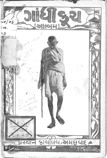 It was intriguing for me to find an album of Gandhiji’s photographs in the list of proscribed books. But when I saw the book, the reason for doing so was apparent. All photographs in the book relate to the 1930 Dandi March and the accompanying text, written by Rasiklal Parikh (1897-1982) is highly critical of the Government’s handling of the March. He has also quoted extensively from Gandhiji’s articles and speeches.
It was intriguing for me to find an album of Gandhiji’s photographs in the list of proscribed books. But when I saw the book, the reason for doing so was apparent. All photographs in the book relate to the 1930 Dandi March and the accompanying text, written by Rasiklal Parikh (1897-1982) is highly critical of the Government’s handling of the March. He has also quoted extensively from Gandhiji’s articles and speeches. 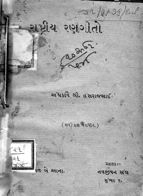 Even after considerable efforts, I have not been able to find any biographical details for ‘Blind Poet Hansrajbhai.’ But he was one of the most popular songsters during the period of our freedom movement. Rashtreey Rangeeto is an 18 page booklet, but almost every page has dynamite laid on it for the British Government. One of the songs opens thus:
Even after considerable efforts, I have not been able to find any biographical details for ‘Blind Poet Hansrajbhai.’ But he was one of the most popular songsters during the period of our freedom movement. Rashtreey Rangeeto is an 18 page booklet, but almost every page has dynamite laid on it for the British Government. One of the songs opens thus: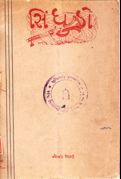 Traditionally, we refer to Gujarati literature produced between 1920 and 1950 as literature of the Gandhian Period (Gandhi Yug). But surprisingly, not many books written by leading lights of this period appear in the list of banned books. Two exceptions are Zaverchand Meghani and Manubhai Pancholi, alias ‘Darshak.’ Zaverchand Meghani earned the title of ‘the National Poet’ from a person no less than Gandhiji. Most of the poets and poems related to our freedom movement are almost forgotten today, but Meghani and his poems are an exception. His Sindhoodo, a 30 page booklet containing only 16 songs, is perhaps the most celebrated of books proscribed by the British Government. It was first published on April 6, 1930, the first day of the Civil Disobedience Movement. By the time the British Government proscribed it, most of its ten thousand copies were already sold. Unnerved by its popularity, the British Government charged Meghani with making a seditious speech and the Court at Dhandhuka (a town in Saurashtra region of Gujarat) sentenced him to imprisonment for two years. After the magistrate delivered his judgment, with his permission, Meghani recited one of the poems contained in Sindhoodo.
Traditionally, we refer to Gujarati literature produced between 1920 and 1950 as literature of the Gandhian Period (Gandhi Yug). But surprisingly, not many books written by leading lights of this period appear in the list of banned books. Two exceptions are Zaverchand Meghani and Manubhai Pancholi, alias ‘Darshak.’ Zaverchand Meghani earned the title of ‘the National Poet’ from a person no less than Gandhiji. Most of the poets and poems related to our freedom movement are almost forgotten today, but Meghani and his poems are an exception. His Sindhoodo, a 30 page booklet containing only 16 songs, is perhaps the most celebrated of books proscribed by the British Government. It was first published on April 6, 1930, the first day of the Civil Disobedience Movement. By the time the British Government proscribed it, most of its ten thousand copies were already sold. Unnerved by its popularity, the British Government charged Meghani with making a seditious speech and the Court at Dhandhuka (a town in Saurashtra region of Gujarat) sentenced him to imprisonment for two years. After the magistrate delivered his judgment, with his permission, Meghani recited one of the poems contained in Sindhoodo.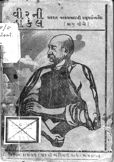 Sardar Vallabhbhai Patel’s speeches made during the 1930 movement were collected in two volumes under the title Veerni Hakal. The first edition of ten thousand copies of the first volume was sold out within no time. Second volume was published within a few months. However, the British Government proscribed both volumes. Preface to the first volume was written by Mahadev Desai, personal secretary to Gandhi, while awaiting arrest in a police station.
Sardar Vallabhbhai Patel’s speeches made during the 1930 movement were collected in two volumes under the title Veerni Hakal. The first edition of ten thousand copies of the first volume was sold out within no time. Second volume was published within a few months. However, the British Government proscribed both volumes. Preface to the first volume was written by Mahadev Desai, personal secretary to Gandhi, while awaiting arrest in a police station.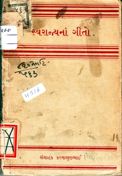 Kalyanji Mehta, a veteran freedom fighter from Surat collected some songs popular during the freedom struggle under the title Swarajyana Geeto. The first volume containing some 155 songs by various poets was published in 1931 to mark Gandhiji’s birth day, and was soon proscribed. The second edition, containing 157 songs, was published in 1938 to mark the 51st Session of the Congress held at Haripura. By this time, the then Bombay State had a Congress Government, and its Home Minister Dr. Kanaiyalal Munshi had revoked the ban imposed earlier.
Kalyanji Mehta, a veteran freedom fighter from Surat collected some songs popular during the freedom struggle under the title Swarajyana Geeto. The first volume containing some 155 songs by various poets was published in 1931 to mark Gandhiji’s birth day, and was soon proscribed. The second edition, containing 157 songs, was published in 1938 to mark the 51st Session of the Congress held at Haripura. By this time, the then Bombay State had a Congress Government, and its Home Minister Dr. Kanaiyalal Munshi had revoked the ban imposed earlier.  Krantine Marge, (On the Road to Revolution) was written in 1930 but was published in 1932. Author Prabhakar Biharilal wanted Kaka Kalelkar to write its preface and so gave him the manuscript. Kalelkar put it in his travel bag so that he can read it while traveling. But the bag was stolen during one of his train journeys. Kalelkar issued press advertisements requesting the thief to return at least the manuscript. But he did not. Luckily, the author had another copy of the book and Kalelkar ultimately wrote preface to the book, hence the delay in its publication. But the book was proscribed soon after its publication.
Krantine Marge, (On the Road to Revolution) was written in 1930 but was published in 1932. Author Prabhakar Biharilal wanted Kaka Kalelkar to write its preface and so gave him the manuscript. Kalelkar put it in his travel bag so that he can read it while traveling. But the bag was stolen during one of his train journeys. Kalelkar issued press advertisements requesting the thief to return at least the manuscript. But he did not. Luckily, the author had another copy of the book and Kalelkar ultimately wrote preface to the book, hence the delay in its publication. But the book was proscribed soon after its publication.